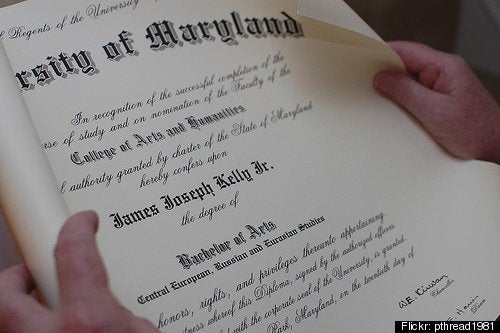
Like thousands of their peers across the country, students at the University of Maryland, College Park are struggling to weather rising costs and dwindling services. But since they're set to pay only $200 more next year than current the in-state rate of $6,566, their concerns seem less poignant than students in other cash-strapped states.
Student Government Association (SGA) President Steve Glickman said Marylanders have grown accustomed to the predictability of their tuition rates and "really benefited" from zero growth the past four years.
Tuition for full-time undergraduates enrolled in the University System of Maryland's 11 public universities was frozen in 2006 after spiking nearly 40 percent in four years. Facing a $2 billion shortfall, Gov. Martin O'Malley included a 3 percent hike in the fiscal 2011 budget proposal he submitted to the General Assembly in January.
Despite this, larger classes and fewer courses offered are making it difficult to graduate on time, said Glickman: "We're facing a situation of depreciating resources where we were paying the same every year and getting less and less."
Junior accounting student Summer Raza said the freeze favored students, but she also mentioned that some are already being pressured to pay their bills.
"It's important that we look at the people who can't afford their tuition right now," said Raza, SGA director of governmental affairs. "But we also need to keep in mind that if we don't support the governor's budget as it is right now, then USM will be inadequately funded."
SGA wrestled with the increase last month and ultimately voted on Feb. 28 to oppose it. The next day, Glickman and Raza joined about 65 other students for the annual Terrapin Pride Day by lobbying in Annapolis on the importance of keeping higher education affordable.
O'Malley spokesman Shaun Adamec said the students' reaction to the "modest" increase was natural and maintained that while the freeze made college more accessible, it was "never supposed to be permanent."
Adamec also acknowledged that just because tuition was frozen, that doesn't mean higher education funding was too. He explained that once the Board of Regents voted to stabilize rates, USM, in return, received state dollars equal to what it would have collected had tuition been raised.
"Every state in the country virtually is facing massive budget deficits and is trying to come up with creative ways to balance the budget," he added. "Far too many states have done that on the backs of middle-class families, [but] we look at higher education very differently."
It's this attitude that Adamec said took USM from the sixth most expensive public university system in the country to a projected No. 21.
Glickman decisively called the 3 percent "fair" but questioned how students can choose between advocating for affordability and quality. "What's worse," he said. "A $200 increase or an extra semester in school?"
Legislators will debate the hike until the budget passes in early April, said Adamec, at which time the Board of Regents will then vote and approve the rates for next year.